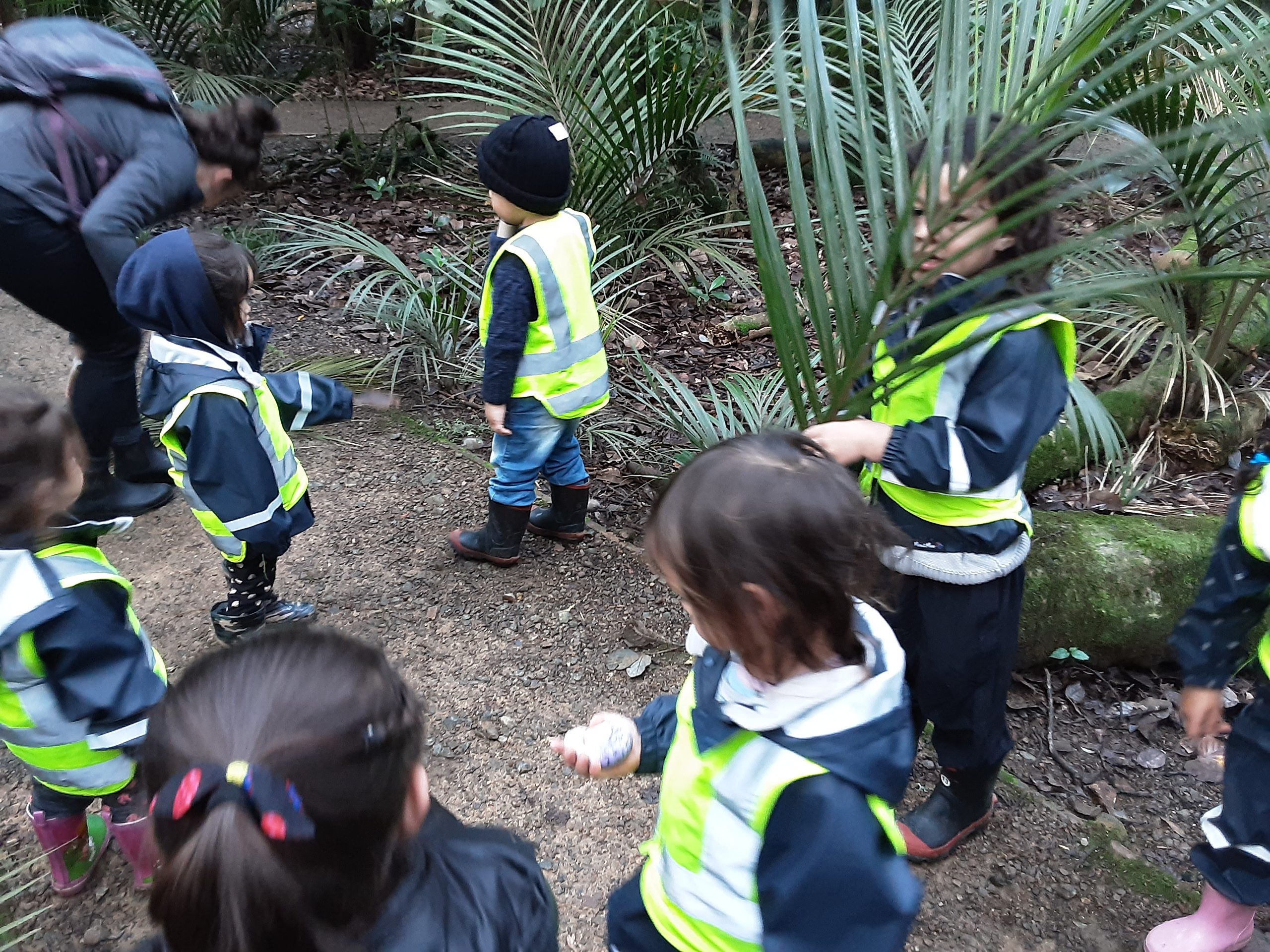At Nature’s Point, we believe some of the best classrooms don’t have walls - they have trees, birdsong and muddy tracks waiting to be explored.
Just a short walk from our centre lies Kirk’s Bush, a lush, green wonderland where our tamariki become explorers, scientists, artists, and caretakers of the land—all before lunch.
In this blog, we’ll take you inside one of our favourite parts of the learning journey: our regular bush walks. You’ll discover how these outdoor adventures aren’t just fun—they’re filled with rich opportunities for growth, connection and discovery.
Why nature? Why Kirk’s Bush?
There’s something special about watching a child discover a wētā hiding under a log or trying to count the number of fantails fluttering overhead. Kirk’s Bush gives our tamariki the space to explore, take safe risks, and build a lifelong relationship with Papatūānuku (Mother Earth).
We don’t just walk – we observe, ask questions and wonder out loud.
“Why are the leaves different colours?”
“What’s that bird doing?”
“Can we build a shelter from sticks?”
And just like that, we’re diving into science, literacy and problem-solving – all from the forest floor.
Children and nature: why they are the perfect blend?
Nature is more than just a “nice to have” – it’s essential for a child’s growth. Research backs it up, and so do we, because we see the difference it makes every day. Here are just a few of the ways nature nurtures:
Boosts brain development: Outdoor play builds creativity, focus, and decision-making. Children learn how to solve problems, make plans and adapt as they go – like figuring out how to cross a log or build a dam in a stream.
Supports physical health: Running, climbing, balancing and exploring – all of it strengthens muscles, improves coordination, and builds confidence in movement.
Nurtures emotional wellbeing: Nature has a calming effect. It reduces anxiety and helps children self-regulate. When they’re feeling overwhelmed, a moment under the trees can do wonders.
Teaches risk assessment: Children learn to manage risks themselves – like deciding whether that rock is stable enough to step on. These small decisions build independence and resilience.
Fosters environmental stewardship: When children fall in love with the natural world early, they’re more likely to care for it later. It’s how we grow future kaitiaki (guardians) of our planet.
Learning without walls: Outdoor exploration isn’t just a ‘nice extra’ – it’s part of our intentional curriculum. When children climb over fallen trees or help a friend through muddy paths, they’re building confidence and resilience; communication and collaboration skills; and a deeper understanding of the natural world.
One of our kaiako, Rachel, says it best, “You see a different side of the children out there. The quiet ones become leaders, the busy ones become focused – it’s beautiful to watch.”
What about when it rains?
Great question – we still go! With gumboots, raincoats, and a whole lot of enthusiasm. Because nature doesn’t pause for the weather, and neither does our curiosity.
There’s something magical about jumping in puddles, feeling the cool mist on your cheeks, and hearing the soft drip of rain through the canopy. For children, it’s not just play – it’s memory-making.
Te Whāriki in the bush
Everything we do at Nature’s Point is grounded in Te Whāriki, New Zealand’s Early Childhood Curriculum. Nature walks align beautifully with its goals—wellbeing, belonging, contribution, communication, and exploration.
Every log turned over is a chance to contribute. Every path navigated together is an experience of belonging. And every insect examined is communication, observation, and learning in action.
Ready to walk the path with us?
We’d love to show you how our tamariki grow, learn and connect with nature every day – both in the centre and in the wild beauty just beyond our fence line. Come for a tour. Stay for the kōrero. Let your child explore beyond the classroom.




